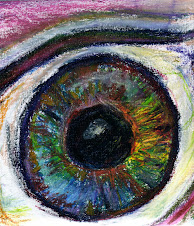Do you notice that one of your students moves their head across the page when reading? The same student probably also struggles with losing their place, skipping lines and little words, and finishing worksheets arranged in rows and columns. Someone who habitually moves their head when reading may be compensating for inadequately developed eye muscle movement skills. However, this strategy ends up hurting their reading speed, efficiency, accuracy, and comprehension. In fact, they are using their neck muscles to point their eyes to the text when each eye has a total of six muscles specifically designed to work together to make very specific, accurately focused eye movements.
Developmental optometrists whose practices include vision therapy have lots of activities that serve to address poorly developed ocular motilities. They usually start as monocular activities so that the student wears a patch over one eye to do the task, switching the patch to the other eye to repeat it. Once a student demonstrates equivalent accurate and efficient eye movement skills with each eye by itself, the therapy advances to binocular tasks. Not only does each eye need to move appropriately to gather visual information, the eyes together have to coordinate to point at the same time to the same point in space. Otherwise the image will wiggle, appear blurred, or seem to be double.
If you have a student who moves their head back and forth when reading, recommend that they see a developmental optometrist for a comprehensive eye exam. They may have a deficit of their ocular motilities which is easily diagnosed by a Developmental Eye Movement Test (DEM). The earlier in a student's academic career that these deficits are identified and addressed, the better that student will do overall in school.
The Purple Book in my Eye Can Too! Read series provides lots of academic activities for the home school classroom which can also be adapted for the regular classroom. Each activity provides review in language arts or math skills for Pre-K through eighth grade. I also included helpful observation questions to assist the teacher or parent to evaluate a student's performance. The activities in The Purple Book will help you identify if your child's eye movement skills are under-developed. They can also be used even by people who do not have eye movement deficits to increase their reading speed and efficiency.
Monday, September 14, 2009
Does your student move their head across the page when reading?
Subscribe to:
Post Comments (Atom)





No comments:
Post a Comment